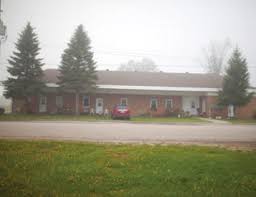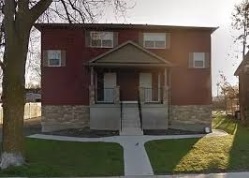Guest Blog: Housing models to grow rural communities
Date: January 31, 2019
Planning housing for our changing demographics is a challenge that all municipalities face across the province. We have a growing seniors population and an increasing number of newcomers to Canada making Ontario their home. When adding in the challenges specific to rural communities, such as youth leaving for jobs/education elsewhere and empty-nesters buying up rural properties, you have the recipe for a lack of affordable housing options.
There is no one-size-fits-all solution but rather a combination of approaches that can help. Each community has to determine what works for their situation.
A study done by the Rural Development Institute in Manitoba suggests that “In smaller communities, the (planning) priorities should be to work within and modify existing stock or convert other buildings to residential use. New housing, particularly if it is rental housing should be limited to small projects.”
Based on those ideas, here are some options for housing that have been undertaken across Ontario:
A former school in the small rural community of Trout Creek has been transformed into five energy efficient, affordable housing units for seniors with assistance from three levels of government.

In Tavistock, a private sector developer converted a landmark hotel in the downtown core into a 16-unit affordable rental building for the 50+ population.

Small affordable housing projects:
At 12 units, the residence at 602 Albert Street isn’t big enough to dominate the landscape of Strathroy, Ontario, but it does offer well-designed affordable housing that blends in with the neighbourhood.

Other solutions for affordable housing include sharing of homes, whether by a co-housing/sharing arrangement or through the addition of a secondary suite.
Cohousing is a community concept where households have private dwellings but share some public facilities. Cohousing can range from fewer than 10 households to as many as 80 households in detached, townhouse or apartment dwellings.
The purpose of sharing facilities is to reduce development and/or operating costs. Additionally, by sharing, households also enjoy the benefit of a supportive living environment and may have access to a broader mix of amenities than would be available to an individual unit. Examples include: Wolf Willow Co-Housing, Saskatoon and Abbeyfield Canada.
In Northumberland, the HomeShare program connects women 55+ who are willing to open their home with other women living in the community who are seeking safe and affordable accommodation. Participants benefit from companionship, offset living costs and shared household responsibilities. Participants are then matched based on preferences, affordability, safety and compatibility. This type of program could work for people of all ages.
Secondary suites are strongly encouraged by the provincial Affordable Housing Act and many communities are looking at pre-built secondary suites in new homes and coach or laneway housing as an effective way to add affordable housing and intensify their communities at the same time.
Municipalities can also encourage the development of new affordable housing by offering incentives such as waiving taxes, donating lands, modification of development standards or an expedited approval process. More ideas and details are available in Canada Mortgage and Housing Corporation's (CMHC) Guide for Canadian Municipalities for the Development of a Housing Action Plan.
So how has CMHC been able to help? In November 2017, a 10-year, $40 billion National Housing Strategy (NHS) was announced. It will give more Canadians a place to call home and help address the housing needs of vulnerable Canadians.
The NHS offers funding programs to support these areas, ranging from a National Housing Co-Investment fund to research grants and demonstration projects. The details of these programs are available on the NHS website.
For more information about CMHC affordable housing ideas and funding, visit the Affordable Housing portal on www.cmhc.ca
Guest blog provided by Arlene Etchen, Regional Consultant, CMHC
Share: